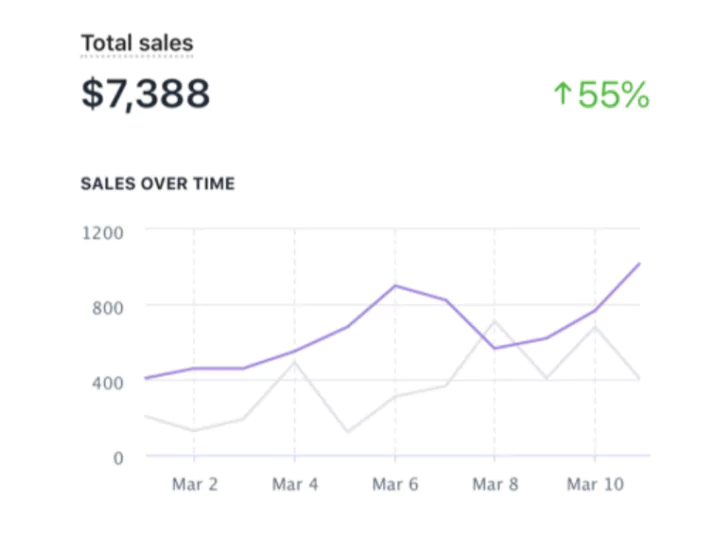Online Advertising for the E-commerce Industry
Overview
In this case study, we will delve into a fictional e-commerce company, and explore their online advertising campaign. We will discuss the challenges they faced, their goals, strategy, and the results achieved.
Additionally, we will explain the choice of e-commerce advertising platforms and outline the process followed in this campaign.
Challenges
Client face several challenges while growing the business:
Increased Competition: The e-commerce industry is highly competitive, making it difficult for the industry to stand out among its competitors.
Customer Acquisition: Acquiring new customers and retaining existing ones was a constant challenge due to the dynamic nature of online shopping preferences.
ROI Optimization: Ensuring a positive return on investment (ROI) from advertising spending was crucial for sustainability.
Goals
E-Shop Express had the following goals for their online advertising campaign:
Increase Sales: The primary objective was to boost sales and revenue through effective advertising.
Expand Reach: Reach a broader audience and tap into new markets to grow their customer base.
Improve ROI: Optimize advertising costs to ensure a favorable ROI.
Strategy
We adopted a comprehensive online advertising strategy for the e-commerce industry:
Platform Selection: The choice of e-commerce advertising platforms was crucial. we opted for a multi-channel approach, focusing on Google Ads, Facebook Ads, and Amazon Advertising.
Audience Segmentation: We divided their target audience into segments based on demographics, browsing behavior, and purchase history.
Keyword Research: Extensive keyword research was conducted to identify relevant search terms and phrases for Google Ads.
Creative Content: Engaging ad creatives and compelling product descriptions were developed to entice potential customers.
Remarketing: Employed remarketing campaigns to re-engage visitors who had previously visited the website but didn’t make a purchase.
A/B Testing: Continuously tested different ad variations and landing pages to optimize performance.
Process
Research and Planning: We started by conducting market research to understand its audience and competitors. Then we set clear advertising goals and budgets.
Platform Selection: After considering the strengths and weaknesses of various platforms, we decided on Google Shopping Ads, Sales Oriented Facebook Ads, and Amazon Advertising based on their target audience and campaign objectives.
Audience Segmentation: We segmented their audience based on demographics, interests, and behavior, customizing ad content for each group.
Ad Creation: Creative content, including ad copy and visuals, was developed to resonate with the selected platforms and target audiences.
Campaign Monitoring and Optimization: Constant monitoring of campaign performance allowed them to make data-driven decisions. They adjusted budgets, refined targeting, and optimized ad creatives based on real-time data.
A/B Testing: Regularly conducted A/B tests to fine-tune ad elements for maximum effectiveness. Leverage YouTube A/B testing best practices for understanding what works the best for you.
Results Analysis: We evaluated the campaign’s success against predefined goals, making adjustments as needed to improve performance.
Platform Selection
We chose the following e-commerce advertising platforms for specific reasons:
Google Ads: This platform was selected for its extensive reach and the ability to target users actively searching for products.
The use of Google Shopping ads proved highly effective for showcasing e-commerce products.
Facebook Ads: Facebook’s demographic targeting allowed the industry to reach a particular audience based on interests and behaviors.
They also leveraged Instagram ads through the Facebook Ads Manager to reach a visually appealing audience.
Amazon Advertising: Given the e-commerce nature of Amazon, we utilized this platform to reach customers who were ready to make a purchase.
For the industry, we optimized product listings to appear prominently in Amazon search results.
Results

After implementing their online advertising strategy, E-Shop Express achieved remarkable results:
Sales Increase: Within the first quarter of the campaign, they experienced a 55% increase in sales.
Expanded Reach: The multi-channel approach helped them reach a wider audience, resulting in a 20% growth in their customer base.
Improved ROI: By constantly monitoring and optimizing campaigns, they achieved a 25% improvement in ROI within 4 months.
Enhanced Brand Visibility: Over the period of 6 months their online presence improved significantly, making the industry a recognized brand in their industry.
Conclusion
Online advertising campaign demonstrates the importance of a well-planned, multi-channel approach in the e-commerce industry. By selecting the right platforms, segmenting their audience, utilizing appropriate customer acquisition strategy and continually optimizing their campaigns, they achieved significant sales growth, expanded their reach, and improved ROI.





